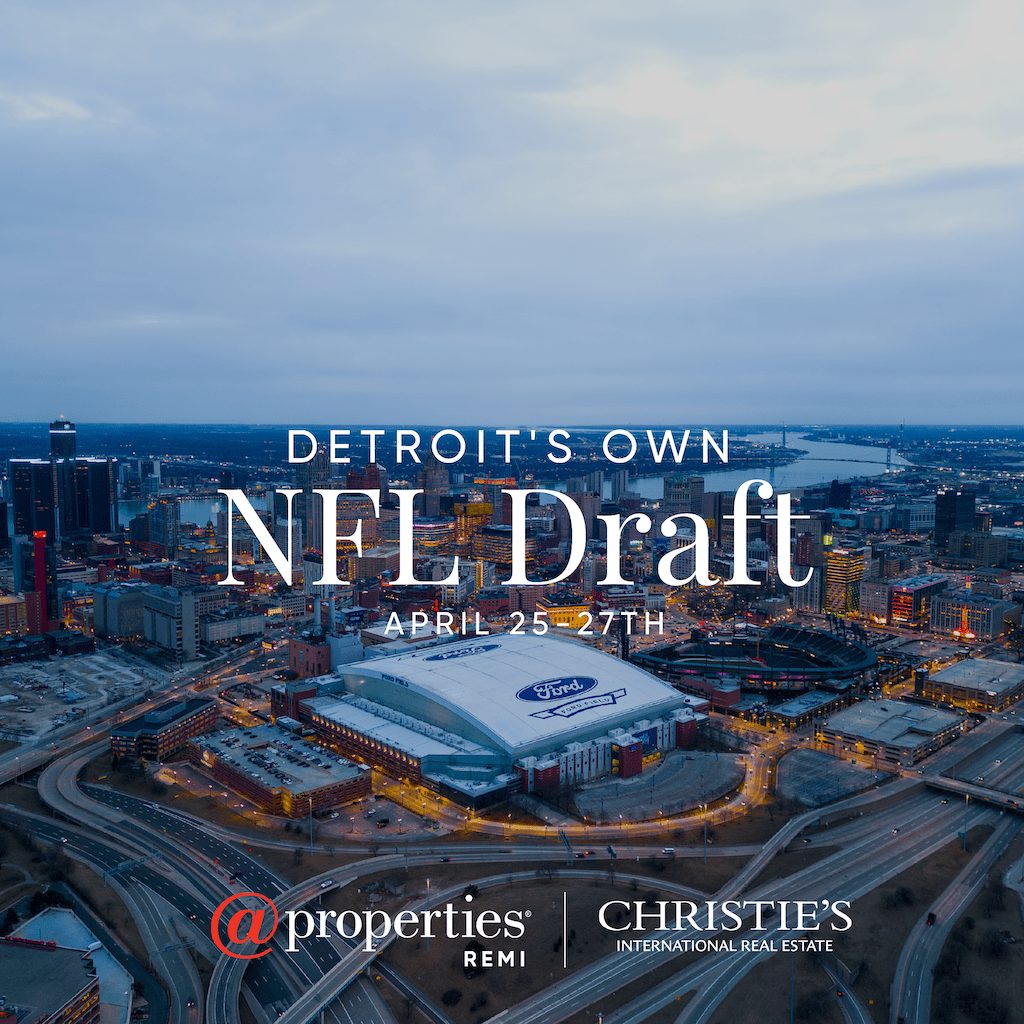Whether you're starting a podcast, want to mix the next club dance banger, or are trying to get your musician friends to spend more time at your pad--a professional-quality home recording studio can be a valuable addition to any luxury home.
Jamie Foxx used his home studio to network with Kanye West and Snoop Dogg. Electronic music makers Moby, Fatboy Slim, and the Chemical Brothers recorded their biggest hits at home. Kevin Parker, better known as Tame Impala, records all of his albums (including 2020's "The Slow Rush") between his two home studios in Perth, Australia and Los Angeles, California.
The Rolling Stones recorded what is widely considered to be the most successful home recording of all time when they set up a recording studio in the home they were renting in the south of France to record "Exile On Main St."
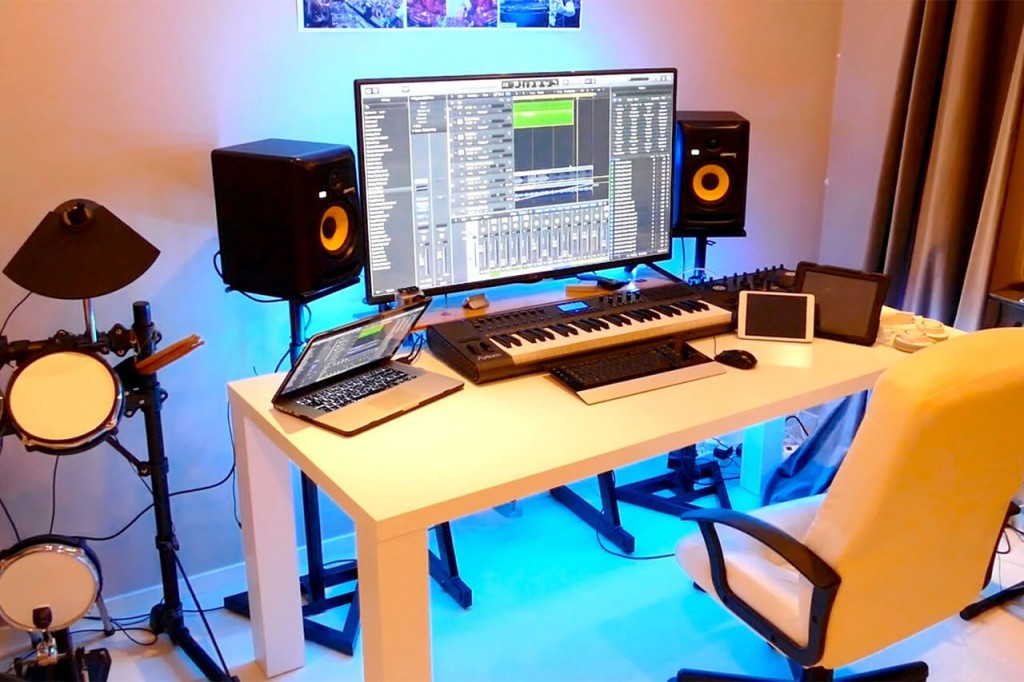
If you'd like to join the long tradition of home studio recording, here are some essentials you'll need to get started.
Where To Put Your Home Recording Studio
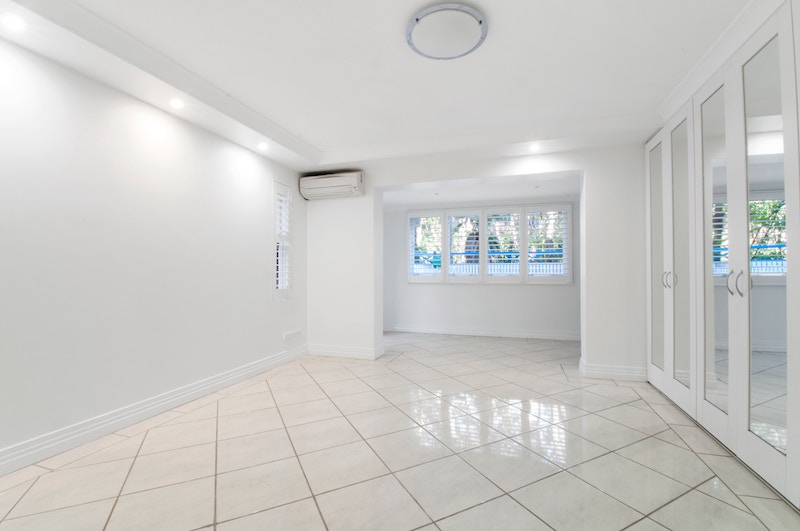
One of the fun parts of designing your home studio is deciding where to put it.
There are usually several options for just about every style of home. Here are a few considerations to make first:
- If you're using an existing room, make sure it's large enough to comfortably fit all of your gear plus collaborators. Also, bigger rooms usually sound better. If you're walling off space, select an interior area that will be naturally buffered from outside noise. You want your studio space to be as far away as possible from heavy foot traffic, chirping birds, plane flyovers, outside weather conditions, kid's rooms, and noisy neighbors. These distractions aren't always avoidable, but locating your studio in a smart area can reduce their frequency.
- Try to avoid spaces with very low ceilings and parallel walls made of drywall.
- If you're building or remodeling a space, you have the luxury of making walls asymmetrical and raising the ceiling.
Once you have your room selected or built, clear it of everything and start with a blank canvas.
How to Design a Home Recording Studio Space
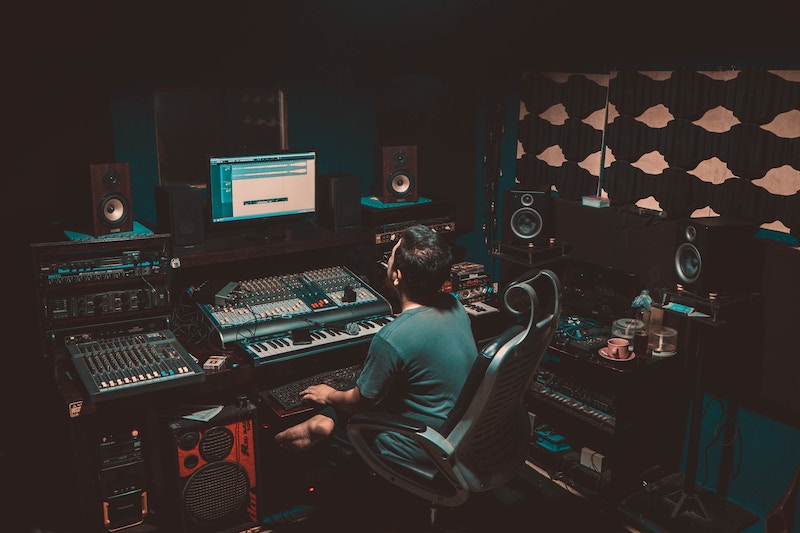
Start putting your studio together from the bottom. Your floors should be either hardwood, concrete, or tile. Instead of carpet, use a large area rug under any instruments like drum kits that would benefit from a little muffling.
Make sure you don't have any decorations on your walls or desk that will cause vibrations. Furniture-wise, you'll want a sturdy table or desk for your mixing area (multi-tiered desks work really well for keeping mixing boards and keyboards accessible and organized. Cushioned high-end office chairs work well around the workstation while armless couches, gliders, or giant bean bags can be used to keep the listening party comfortable.
Invest in a package of acoustic panels for the walls. These are easily applied using the included adhesive. Acoustic treatments will improve the sound quality of your room and give your studio a professional touch.
A good sound tech can help you run cables and arrange monitors and microphones for maximum output. A top-shelf mic like this one by AKG Pro Audio will cover up any deficiencies in your space.
Once you have your room ready, it's time to fill it with the tools you'll need to create and play.
Get The Right Tech Tools Made for Studio Music Production
Everyone works on laptops these days, but for a home recording studio, a desktop setup is still the way to go. You want a computer that's dedicated to your studio, so size and portability are not concerns.
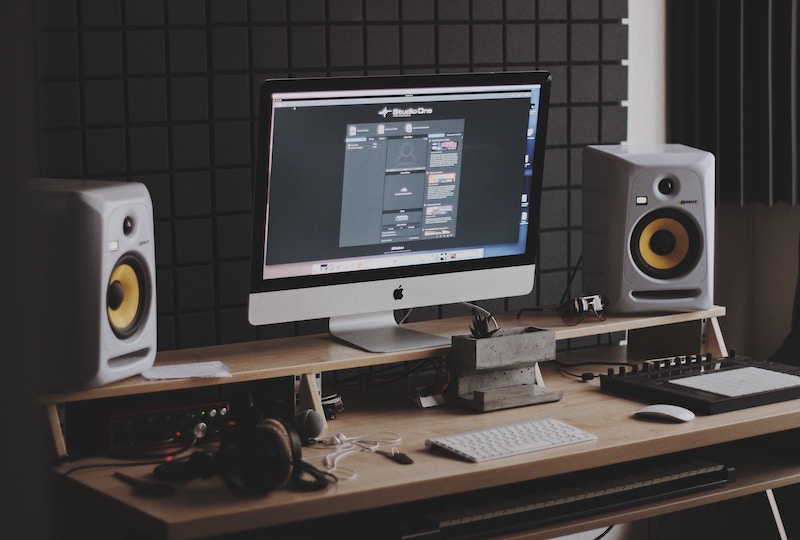
The popular choice to go with here is an iMac Pro. It's got the built-in memory and processing power to handle all your music production and recording needs. Music files can take up a lot of space, so if you're going with an older or smaller Mac or PC--make sure you buy an additional hard drive to store all of those song files and loops.
Once you've got your hardware, load up your computer with one of the best DAW (Digital Audio Workstation) software products. Logic Pro (Mac only), Ableton Live, Cubase and Pro Tools are the ones most used in the industry.
You will also need a piece of hardware called an audio interface. It's best to consult a music producer or audio engineer to determine the best audio interface for the size of your studio and production needs.
These are your main technical purchases, but you'll also need headphones, studio monitors, a keyboard, soundboard, microphones, mic stands/cables, and pop filters. It can be an investment if you're buying everything from scratch but quality brands and equipment will last you a long time if you care for it properly.



